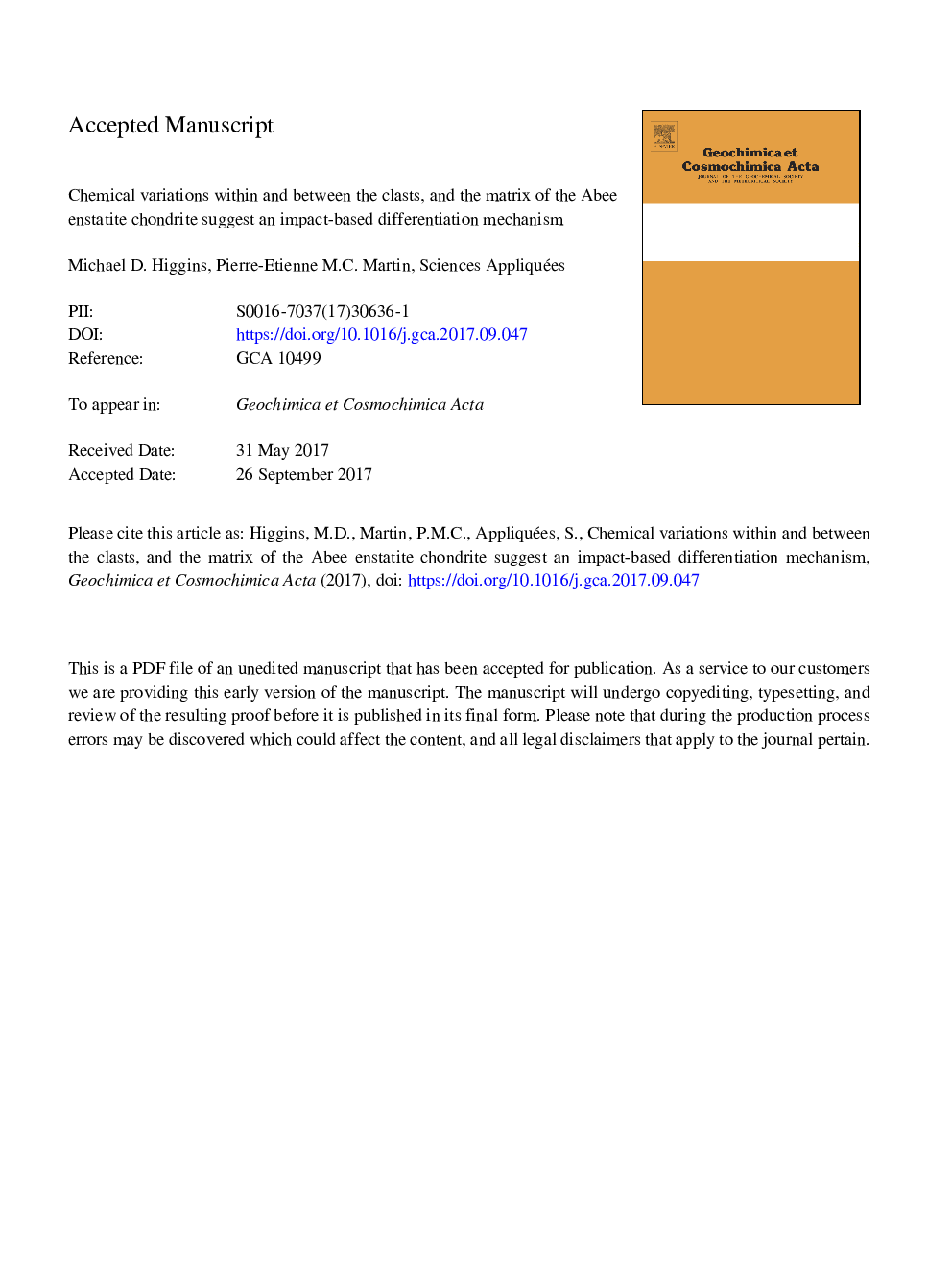| کد مقاله | کد نشریه | سال انتشار | مقاله انگلیسی | نسخه تمام متن |
|---|---|---|---|---|
| 5783155 | 1637937 | 2018 | 26 صفحه PDF | دانلود رایگان |
عنوان انگلیسی مقاله ISI
Chemical variations within and between the clasts, and the matrix of the Abee enstatite chondrite suggest an impact-based differentiation mechanism
ترجمه فارسی عنوان
تغییرات شیمیایی در داخل و بین کلاسمها و ماتریس کانتریت سنتاتیت اب ای نشان می دهد که مکانیزم تمایز مبتنی بر تأثیر
دانلود مقاله + سفارش ترجمه
دانلود مقاله ISI انگلیسی
رایگان برای ایرانیان
موضوعات مرتبط
مهندسی و علوم پایه
علوم زمین و سیارات
ژئوشیمی و پترولوژی
چکیده انگلیسی
Abee is an enstatite chondrite breccia dominantly composed of kamacite, enstatite, silica, plagioclase, troilite and niningerite. Clasts are up to 220â¯mm long and vary in shape from angular to rounded. Some clasts are zoned with kamacite-enriched rims that follow the edge of the clast. Spatial compositional variations were examined in a small block to find out more about the petrological processes that produced this rock, particularly the relationship between the clasts, the matrix and the cores/rims of the zoned clasts. Compositional maps produced using a focussed-beam XRF were segmented into clasts and matrix, and rims and cores where possible. Compositions of most clasts, matrix and rim/cores define a simple, linear trend on simple variation diagrams. If it is assumed that all components were derived from an original homogeneous composition then the variation can be explained either by addition of kamacite or by loss of all other phases. Within this overall compositional variation the kamacite content generally increases as follows: matrixâ¯<â¯large homogeneous clastsâ¯ââ¯zoned clast coresâ¯<â¯small homogeneous clastsâ¯ââ¯zoned clast rims. Production of diversity by addition of kamacite to clasts and rim seems to require a complex history as the source cannot have been the current matrix. It is also difficult to produce the observed chemical variations and zoning by partial melting. However, differentiation by removal of all non-metallic phases may result from repeated impacts: Shock waves would deform kamacite whilst fracturing all other phases. The broken grains would then migrate towards the surface of the clasts where they would spall off into the matrix. This process would also lead to the observed rounding of some clasts. We propose that this shock-differentiation process be called 'smithing', as it resembles the ancient process of iron refining.
ناشر
Database: Elsevier - ScienceDirect (ساینس دایرکت)
Journal: Geochimica et Cosmochimica Acta - Volume 220, 1 January 2018, Pages 71-81
Journal: Geochimica et Cosmochimica Acta - Volume 220, 1 January 2018, Pages 71-81
نویسندگان
Michael D. Higgins, Pierre-Etienne M.C. Martin,
